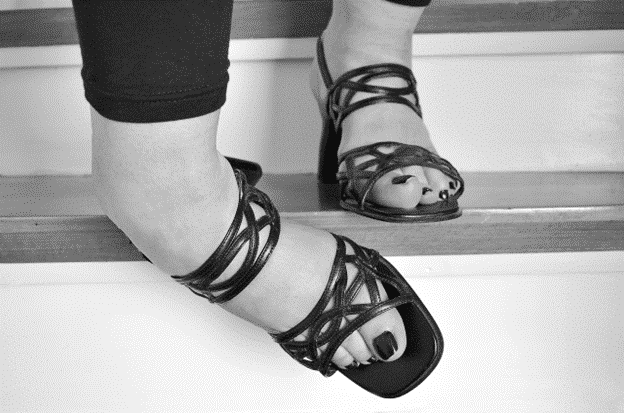Table of Contents
The United Kingdom, known for its meticulous safety regulations and health standards, has witnessed an unexpected surge in slip, trip and fall claims over recent years. Such incidents, while seemingly minor, can lead to debilitating injuries, long-term physical complications, and significant financial ramifications. This upward trend has left many stakeholders, from business owners to city planners, grappling for answers and solutions. Let’s dive deeper into the potential causes behind this rise and the implications it bears on UK society.
Decoding the Data: A Statistical Perspective
Before we delve into the root causes of slip, trip and fall claims, it’s imperative to understand the magnitude and distribution of these incidents. Drawing from recent statistics, the following data offers a glimpse into the burgeoning issue:
| Year | Number of Slip, Trip, Fall Claims | Total Payout (in £ millions) |
| 2018 | 31,000 | 224 |
| 2019 | 34,500 | 249 |
| 2020 | 37,200 | 268 |
From the table, there’s a clear year-on-year rise, not just in the number of claims but also in the total compensation amount. This uptrend not only indicates an increasing frequency of incidents but also suggests a possible escalation in the severity of injuries or the costs associated with them.
Possible Factors Behind the Rise.
Several intertwining factors could be contributing to this growing issue:
- Ageing Infrastructure: Many areas in the UK, particularly older cities and towns, still rely on ageing infrastructure. Uneven pavements, outdated public spaces, and a lack of regular maintenance can create numerous tripping hazards.
- Increasing Urbanization: With more people flocking to cities for opportunities, there’s a surge in foot traffic. Overcrowded streets, ongoing construction sites, and congested public spaces can exacerbate the risk of slips and trips.
- Weather Patterns: The UK’s unpredictable weather, coupled with occasional extreme conditions like heavier snowfall or rains, can make surfaces slippery, increasing the risk of falls.
- Lack of Awareness: While it might sound trivial, public awareness about potential hazards plays a significant role. The population might not always be alert to risks, leading to avoidable accidents.
Implications for Businesses and Public Spaces
The rise in claims has several consequences:
- Financial Burden: As evident from the data table, the financial strain on businesses and local councils is mounting. Compensation payouts, legal fees, and higher insurance premiums can erode budgets.
- Reputational Damage: Businesses, especially those that experience recurrent incidents, might face reputational damage, leading to loss of clientele or decreased footfall.
- Operational Disruptions: For businesses, an accident on the premises might lead to operational disruptions, investigations, and potential closures.
Given these implications, there’s an urgent need for proactive measures to ensure public safety.
The Role of Legal Firms in the Rising Claims
One angle that’s gaining attention in the discourse around rising slip, trip, and fall claims is the role of legal firms. With the legal landscape becoming increasingly accessible and a growth in firms specialising in personal injury claims, more victims might feel empowered to seek compensation. The sheer number of advertisements across media platforms offering ‘no win, no fee’ services can be an incentive for those previously hesitant to file a claim.
While this democratization of legal representation is commendable, critics argue it might be indirectly encouraging a surge in claims, even in less severe cases. On the other hand, supporters opine that it’s essential for victims to have their day in court, ensuring that negligent parties are held accountable.
The Broader Impact on Health and Mental Well-being
Beyond the immediate physical repercussions of slips, trips, and falls, there’s a broader narrative about the victims’ long-term health and psychological well-being. Individuals who’ve experienced such incidents often report lasting effects like chronic pain, mobility issues, or even psychological trauma. The fear of another fall can deter them from engaging in daily activities, impacting their quality of life. This ripple effect on mental health can sometimes be more debilitating than the physical injuries, necessitating long-term therapy and support. Recognising and addressing these invisible scars is crucial, not only for the victims’ recovery but also for raising awareness about the profound impact of what might seem like ‘minor’ accidents.
Towards a Safer Tomorrow: Preventative Measures
Addressing this growing challenge requires a multi-faceted approach:
- Regular Maintenance and Audits: Businesses and councils should prioritize regular checks of their premises and public spaces. Identifying and rectifying potential hazards promptly can significantly reduce risks.
- Public Awareness Campaigns: Engaging campaigns that educate the public about common hazards, especially during seasons with adverse weather, can foster more caution among pedestrians.
- Investment in Infrastructure: Renovating ageing infrastructure, improving drainage systems, and using slip-resistant materials can go a long way in preventing accidents.
- Clear Signage: Especially in areas with ongoing construction or known hazards, clear and visible signage can alert pedestrians, helping them navigate safely.
Conclusion
The rising number of slip, trip, and fall claims in the UK is a pressing concern that demands attention from various societal stakeholders. While the causes might be multifarious, the path to a solution hinges on collective responsibility, proactive measures, and sustained efforts. By prioritising public safety and continually adapting to changing circumstances, the UK can hope to reverse this worrying trend.


